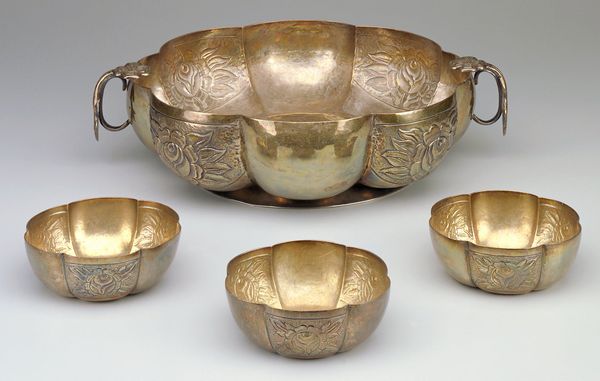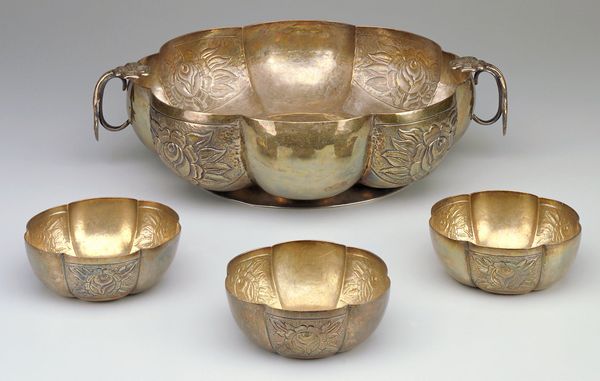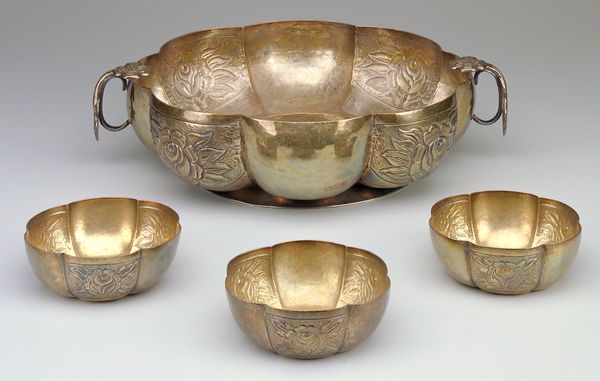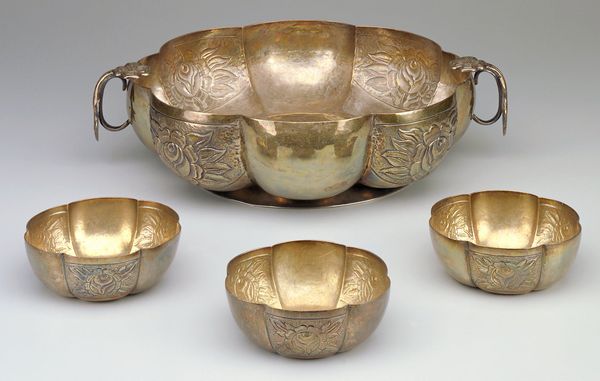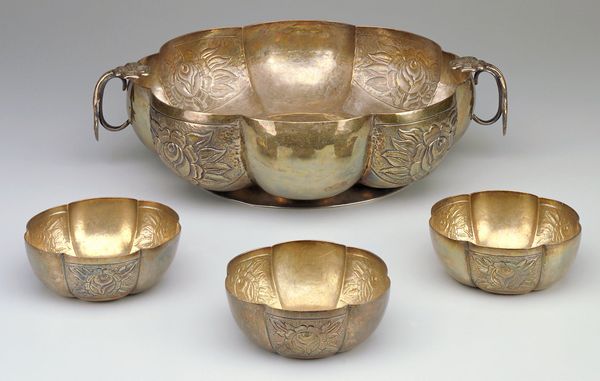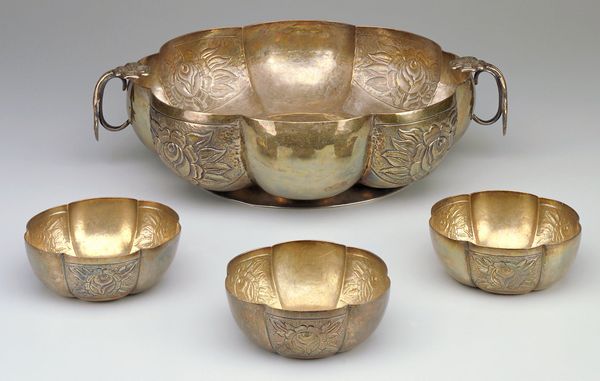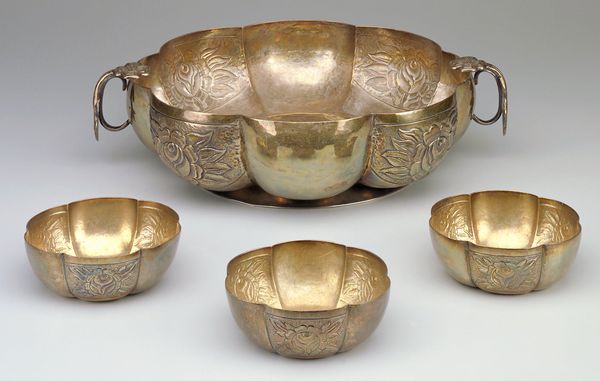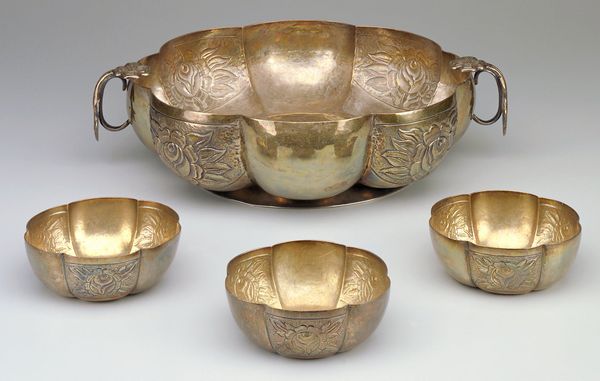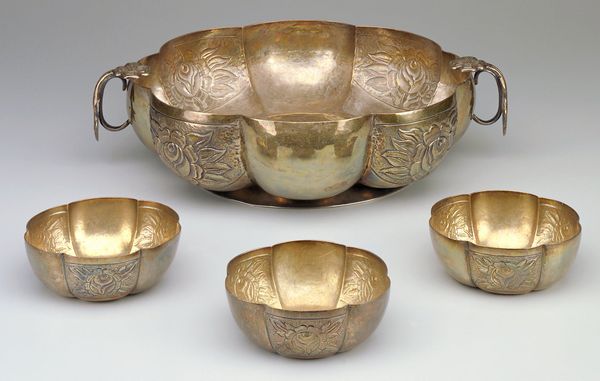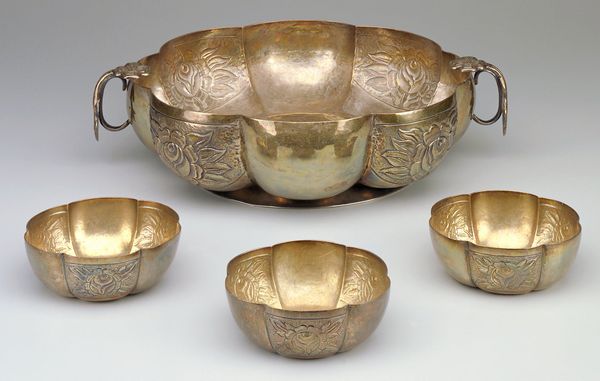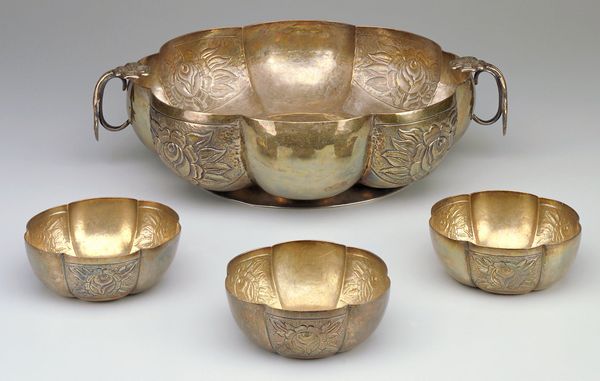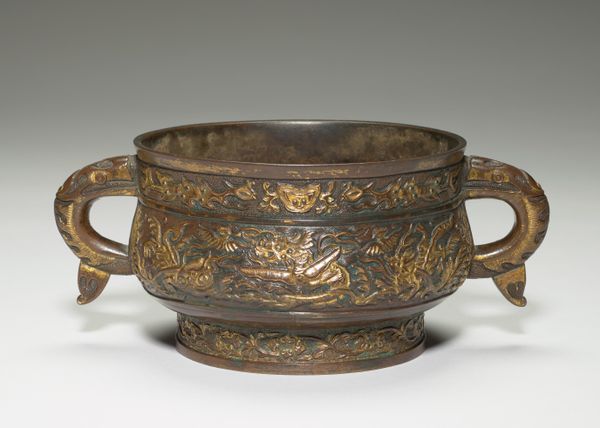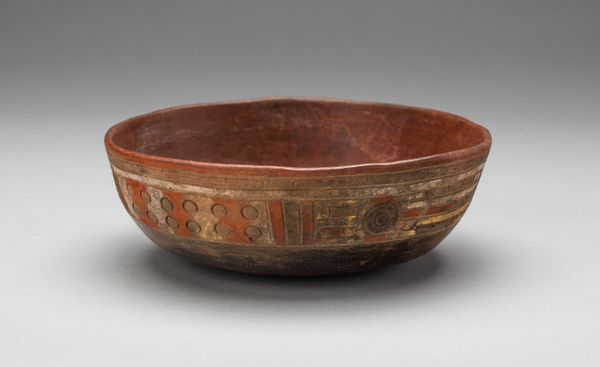
silver, metal, sculpture
#
silver
#
metal
#
sculpture
#
ceramic
#
decorative-art
Dimensions: 3 1/2 x 15 x 12 5/8 in. (8.9 x 38.1 x 32.1 cm)
Copyright: Public Domain
Curator: Here we have an elegant silver centerpiece and bowl set from around 1929 or 1930. Note the decorative floral elements embossed on the pieces. Editor: The sheen on the silver, even in a photograph, is incredibly tactile. You can almost feel the cool smoothness, and then there are the tiny tool marks—it hints at a tremendous amount of careful handwork. Curator: Indeed. The play of light on the metal is quite deliberate, highlighting the contours of each vessel and lending a certain depth to the floral motifs. We see a deliberate emphasis on symmetry, form, and the interplay between the positive and negative space created by the flower patterns. Editor: Absolutely, and thinking about that labour... someone invested so many hours hammering, shaping, and engraving this silver. This wasn't just functional; it was an explicit statement about wealth, skill, and the role of crafted objects in the home during that era. Consider also how often it would be handled. It wasn't made to sit and collect dust in a gallery! Curator: An important point. One might even argue the arrangement encourages interaction. The central piece anchors the presentation, its subordinate bowls mirroring and extending its theme. There’s a certain harmony intended to resonate with the owner, to convey a sense of completeness and visual pleasure. Editor: Though one must remember that visual pleasure came at a cost. From the mine to the dining table, each bowl carries the imprint of extraction, labor, and consumption. A beautiful object like this also prompts reflection about who benefitted from this beauty and who bore its burden. Curator: I concur; to perceive a totality demands understanding that component particulars construct meaning in conjunction. Yet from a formal viewpoint, the deliberate use of light and shadow, symmetry, and surface textures are a dialogue conducted between maker and perceiver. Editor: Yes, ultimately, engaging with its making processes enhances our experience of this beautiful object. The care embedded in that creative undertaking transforms how we interpret luxury and artistry of design from this decorative piece. Curator: It provides a fascinating view of interwar aesthetics through carefully modulated design features. Editor: Precisely. Viewing that handwrought nature allows us to interpret the period’s attitudes around display, ownership, skill, craft, design and value.
Comments
No comments
Be the first to comment and join the conversation on the ultimate creative platform.
